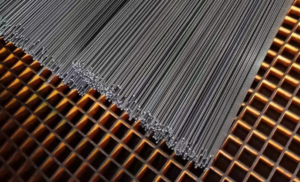Hastelloy, a nickel-based superalloy, is renowned for its exceptional corrosion resistance and high-temperature performance. It finds widespread applications in industries that deal with highly corrosive chemicals and acids. The diverse classification of Hastelloy alloys reflects the intricate balance of elements that contribute to their unique properties.

What is the classification of Hastelloy?
The classification of Hastelloy alloys is primarily based on their chemical composition, with each variant optimized for specific operating conditions. The most common classifications include B-type Hastelloy, C-type Hastelloy, G-type Hastelloy, Hastelloy X, Hastelloy D-205, Hastelloy G-50, and Hastelloy S. Each of these alloys has its unique characteristics and is tailored for specific applications.
B-type Hastelloy alloys are known for their excellent resistance to reducing acids, such as hydrochloric acid. The addition of molybdenum and tungsten in these alloys enhances their corrosion resistance, making them suitable for use in chemical processing equipment and pollution control systems.
C-type Hastelloy alloys, on the other hand, exhibit superior resistance to oxidizing media and reducing acids. The balance of chromium, molybdenum, and iron in these alloys provides them with excellent corrosion resistance in a wide range of environments. They are often used in equipment that handles concentrated nitric acid and oxidizing salts.
G-type Hastelloy alloys, including Hastelloy G and Hastelloy G-30, are specifically designed for resistance to phosphoric acid and sulfuric acid. These alloys are frequently employed in phosphoric acid production and processing equipment due to their remarkable corrosion resistance in such harsh conditions.
Hastelloy X is a nickel-chromium-molybdenum alloy that combines excellent corrosion resistance with high strength and good fabricability. It is often used in high-temperature applications, such as in the petrochemical industry, where it can withstand both corrosive environments and elevated temperatures.
Hastelloy D-205 is a nickel-chromium-molybdenum-copper alloy that offers exceptional resistance to sulfuric acid and other reducing acids. Its unique composition makes it suitable for use in sulfuric acid production and refining equipment, where it can withstand the corrosive effects of the acid.
Hastelloy G-50 is a nickel-chromium-molybdenum alloy that is renowned for its resistance to both oxidizing and reducing acids. It is often used in equipment that handles nitric acid, sulfuric acid, and other corrosive media. The alloy’s balance of elements provides it with superior corrosion resistance and good fabricability.
Lastly, Hastelloy S is a nickel-chromium-molybdenum alloy that is specifically designed for use in sulfuric acid environments. Its unique composition allows it to withstand the corrosive effects of sulfuric acid, making it an ideal choice for equipment in sulfuric acid production and handling processes.
The classification of Hastelloy alloys is not just about their chemical composition but also about their mechanical properties, welding characteristics, and fabricability. Each alloy is carefully tailored to meet the specific needs of the industry it serves. For instance, some alloys may have higher tensile strength or better welding properties, while others may excel in terms of corrosion resistance or fabricability.
The manufacturing process of Hastelloy alloys is also crucial in determining their properties and classification. The alloys are typically produced through a combination of vacuum induction melting and electroslag remelting, which ensures a homogenous distribution of elements and minimizes impurities. This, in turn, contributes to the alloys’ exceptional corrosion resistance and high-temperature performance.
Conclusion
In conclusion, the classification of Hastelloy alloys is a complex yet fascinating subject. It involves a delicate balance of elements, mechanical properties, and manufacturing processes that together contribute to the alloys’ unique characteristics and applications.
Thank you for reading our article and we hope it can help you to have a better understanding of the classification of Hastelloy. If you are looking for Hastelloy Alloy suppliers and manufacturers online now, we would advise you to visit Huaxiao Alloy.
As a leading supplier of Hastelloy Alloys from Shanghai, Huaxiao Alloy offers customers high-quality Hastelloy C276, Hastelloy C22, Hastelloy C2000, and Hastelloy B2 at a very competitive price.



